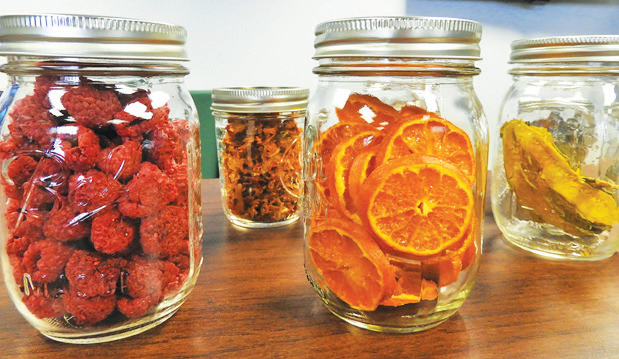
Ethiopia has a diverse agricultural landscape and is a hub for fruit production. With an abundance of delicious fruits such as mango, banana, papaya, avocado and orange, the country possesses immense potential for both domestic consumption and international trade. The horticultural and fruit sectors not only play a crucial role in ensuring food security but also possess abundant water resources and offer employment opportunities, particularly for the country’s young and female population. However, despite this advantage, achieving food security within the sector has bcome a challenge Scholars assert that it is imperative to convert the sector’s potential into tangible outcomes to address the prevailing issues of rising living costs, inflation, and unemployment while ensuring food security.
“The sector has high contribution to food security and foreign currency earnings” says Bayable Atnafu (PhD), Deputy Director of Addis Ababa University’s Bio-Technology Institute.
He told the Ethiopian Press Agency that lack of research support for the production and post-production processes, are rather hindering the society from fully benefiting from the sector’s potential. Consequently, this lack of support not only results in losses but also renders Ethiopian products less competitive in the international market, he said.
He stated that the horticultural and fruit sectors have the capacity to ensure food security to the extent of 30 to 40 percent. To increase foreign exchange earnings, he suggests prioritizing product quality and ensuring food security in urban agriculture, while also minimizing pollution caused by by-products.
Fruits can contribute to air pollution through various mechanisms, primarily during the post-harvest and preservation stages. In Ethiopia, where the preservation of fruits is essential for maintaining their quality and preventing spoilage, several methods can be employed to minimize air pollution and ensure fruit preservation.
Improper variety of packaging materials can contribute to air pollution. Certain packaging materials, such as plastics, can release harmful gases when they degrade or incinerate, contributing to air pollution. Also, inadequate refrigeration and cold storage facilities can lead to fruit spoilage, resulting in increased waste and emissions.
Additionally, the transportation of fruits, especially over long distances, can contribute to air pollution. Vehicles used for transportation, such as trucks, may emit pollutants, including greenhouse gases and particulate matter. Moreover, scarce post-harvest handling practices can result in significant fruit losses, leading to increased waste and associated air pollution.
He emphasizes that scientific research and adherence to proper production methods are vital for achieving desirable outcomes. He mentioned that the example of Kenya, where the sector receives significant attention, contributing 40 percent to the country’s total income.
Zenebe Mekonen (PhD), a teacher and researcher at the Department of Plant Science at Arba Minch University, stated that fruits and vegetables, due to their nutrient content, can readily contribute to food security. However, despite various research efforts in the field, professionals in the sector receive low wages, resulting in a lack of motivation and reduced effectiveness. Although challenges exist regarding crop protection, improved varieties, and modern machinery, current activities demonstrate encouraging progress.
He remarked that while investigations are regularly conducted, there are limitations in altering research findings into actionable solutions. He emphasized the necessity of focusing on product quality to maximize the sector’s contribution to foreign exchange earnings. He also underscores the importance of establishing warehouses to preserve manufactured products and providing regular skill training for professionals in the sector.
Abdella Negash, the Executive Director of Horticulture Development at the Ministry of Agriculture, highlighted the significant contributions of the horticultural and fruit sectors toward ensuring food and nutrition security. He explained that considerable attention is being dedicated to turning this potential into a reality. While the sector is expected to become a valuable resource when combined with the agro-industry, more work is required to fully capitalize on its potential, despite the ongoing efforts.
To ensure the success of these preservation techniques, the Ethiopian government has collaborated with international organizations, research institutions, and agricultural experts. To address the challenges, these partnerships facilitate proper training and education programs should be implemented to educate farmers and workers on best practices for handling, sorting, and storage to minimize post-harvest losses and subsequent waste generation. To mitigate this, eco-friendly and biodegradable packaging materials should be prioritized, such as paper-based packaging options.
The Ethiopian government should introduce solar drying technology. Farmers are provided with solar dryers, which use the sun’s heat to remove moisture from the fruits, extending their shelf life considerably. This environmentally friendly technique not only reduces post-harvest losses but also allows farmers to access markets beyond the harvest season. Moreover, solar drying helps retain the nutritional value of the fruits, making them a healthy snack option for consumers.
In addition to solar drying, Ethiopia has also embraced the concept of fruit canning. Canning is a time-tested preservation method that involves sealing fruits in airtight containers to prevent spoilage. This technique has gained popularity due to its convenience and commercial viability. With the establishment of fruit processing plants equipped with modern canning facilities, farmers now have access to a value-added market for their products.
Fruit canning has not only created employment opportunities but has also enabled farmers to supply their produce to distant regions, ensuring a steady income throughout the year. Moreover, canned fruits are exported to international markets, strengthening Ethiopia’s position in the global fruit trade.
Furthermore, promoting value-added activities, such as processing fruits into juices, jams, or dried fruits, can enhance their shelf life and reduce post-harvest losses. By adding value to fruits, their marketability and demand can increase, leading to reduced waste and associated emissions.
Proper waste management practices are crucial for minimizing air pollution associated with fruit preservation. Organic waste generated during the preservation process should be properly composted or utilized for biogas production, reducing the need for open burning and minimizing harmful emissions, scholars underlined.
Entrepreneurs within the sector recognize its immense potential for job creation. By incorporating export value into remittances, the sector can further boost foreign exchange earnings. To harness these opportunities, the focus should be on carefully selecting product varieties for the foreign market, establishing and maintaining high-quality standards, and supporting local breeders in reproducing superior products.
Abdela highlighted that not all products sent to the foreign market suffer from quality issues. Ethiopia’s avocado production, for instance, is in high demand globally. Strategies have been implemented to reduce post-production waste and damage, demonstrating a commitment to addressing quality concerns.
In conclusion, the horticultural and fruit sectors in Ethiopia hold tremendous potential for ensuring food security, utilizing water resources, creating employment opportunities, and generating foreign exchange earnings. However, the sector faces challenges related to research support, low wages for professionals, limited infrastructure, and quality control. By addressing these challenges and prioritizing research, training, and product quality, Ethiopia can unlock the full potential of the sector, leading to improved food security, economic growth, and sustainable development. Besides, the combination of traditional and modern preservation methods contributes to the preservation of Ethiopia’s diverse fruit varieties and supports sustainable agriculture and food security.
BY FIKADU BELAY
THE ETHIOPIAN HERALD TUESDAY 23 APRIL 2024





